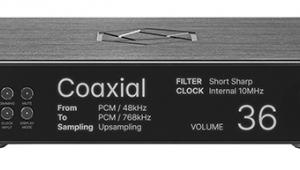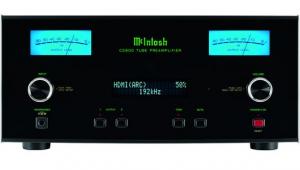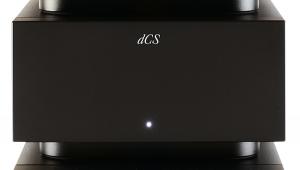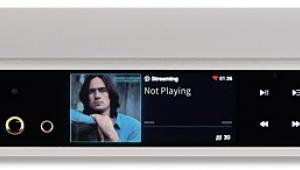dCS Debussy (£7499)

Down the years a great many words of praise have been directed at dCS products but I doubt that ‘stylish’ or ‘chic’ have often been among them. Well, the new Debussy DAC represents a big step in the right direction.
Let’s begin the tour with that striking fascia, festooned with no fewer than 17 blue LEDs. To the left, a diamond of four buttons controls power on/off, volume up/down and mute. Further inboard, three more buttons toggle between linear phase or minimum phase digital filters, inverted or non-inverted signal polarity (absolute phase), and between the five digital inputs. The selected input is displayed in the first vertical array of LEDs over to the right of the fascia, the second indicating the input sampling-rate in those seven familiar steps from 32kHz to 192kHz. It also doubles as a low-res volume indicator when the volume setting is changed.
At the back are balanced and unbalanced analogue outputs on XLR and phono sockets, a switch selecting 6V or 2V output level, two AES/EBU digital inputs on XLR, two S/PDIF inputs (one on phono, one on BNC), a work clock input on BNC, a type B USB input socket, a multi-pin test socket, and an IEC mains input socket and switch.
Yes, the USB socket is an audio input, as well as providing a means of applying software updates via computer. It uses dCS’s asynchronous mode technology – first seen in the Scarlatti Upsampler and licensed by Arcam for its rDAC – which streams audio data under command of the DAC’s master clock, thus eliminating the poor jitter performance typical of conventionally realised USB interfaces. A little frustratingly, the USB link remains limited to a 96kHz maximum sampling rate, and dCS persists in using dual-wire connection for quad-rate (176.4kHz and 192kHz) data input via AES/EBU. The S/PDIF inputs, like the USB input, are limited to 96kHz.
FILTER OPTIONS
The two digital filter options have very similar amplitude responses, says dCS, but disparate phase responses, the first (indicator off) being a conventional linear phase filter with consequent pre-response whereas the second (indicator on) is a minimum phase design, lacking pre-response but introducing high frequency phase shift. Our preference on 44.1kHz material was solidly for the linear phase filter, principally because of its rhythmical superiority. On the pacy ‘At Sundown’ from The Hot Club of San Francisco [Clarity Recordings CCD- 1006], for instance, there was more toe-tapping bounce from the very outset. By comparison the minimum phase filter sounded marginally, but appreciably, slugged.
When we repeated the comparison on a number of tracks at 96kHz, preference was more equivocal. On Diana Krall’s ‘Narrow Daylight’, ripped from the DualDiscof The Girl In The Other Room, [Verve B0003758-82], we preferred the slightly softer, less aggressive sound of the minimum phase filter, while on the third movement of Rachmaninov’s Symphonic Dances (from Classic Records DAD 1004) we opted for the crisper, slightly more energetic sound of the linear phase alternative.
Test checks done, we then began to listen to and appreciate the Debussy at leisure, with informal comparisons to other DACs to hand. While our view of the Scarlatti duo is that they’re even better, the Debussy is a great life partner in the listening room. This isn’t a DAC for listeners who like Vaseline-onthe- lens soft focus but neither does it grind you down with incessant leading edge zing – there’s light and shade to temper its high resolution.
A good example of the Debussy’s iron fist in velvet glove was the SACD version of Cantate Domino [Proprius PRSACD 7762], the atmospheric Swedish recording of church music, taped on a Revox A77 with a single pair of microphones – a purist recording that so caught people’s attention all those decades ago. The Debussy served up ‘Stille Nacht’ with just the right blend of insight and warmth, delineating voices in the chorus but retaining the characteristic creamy sounds.
VERDICT
There’s no question that the Debussy is a very fine product worthy of its illustrious marque. It offers high resolution, musically engaging sound, is built like the proverbial brick outhouse and gilds the lily by shedding the industrial mien of its forebears. What’s not to hanker for?
Originally published in the Yearbook 2011




























































